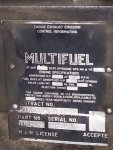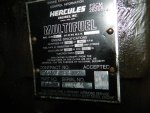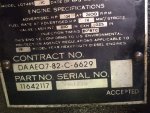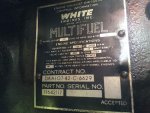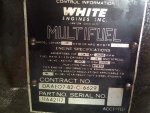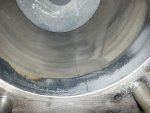Was just rereading the TM and did anyone see that the code A IP booster pump made 80lbs of fuel pressure.
Absolute cleanliness of fuel pump parts must be maintained during all disassembly,
inspection, repair, and assembly procedures. Dust, dirt, grime, or any abrasive matter
must not come in contact with precision lapped surfaces of internal parts (para 3-2).
Support the pump housing so that the timing pointer will not be damaged (para 3-16b).
Care should be exercised during installation of the compensator on code A pumps. The
top of the fuel control link is not secured to the piston shaft. If the top of the link does
not remain engaged in the shaft, the stop plate will fall into the governor housing
causing serious damage to the pump (para 3-46a). Do not allow the fuel pressure to
exceed 400 psi (para 3-51g).


